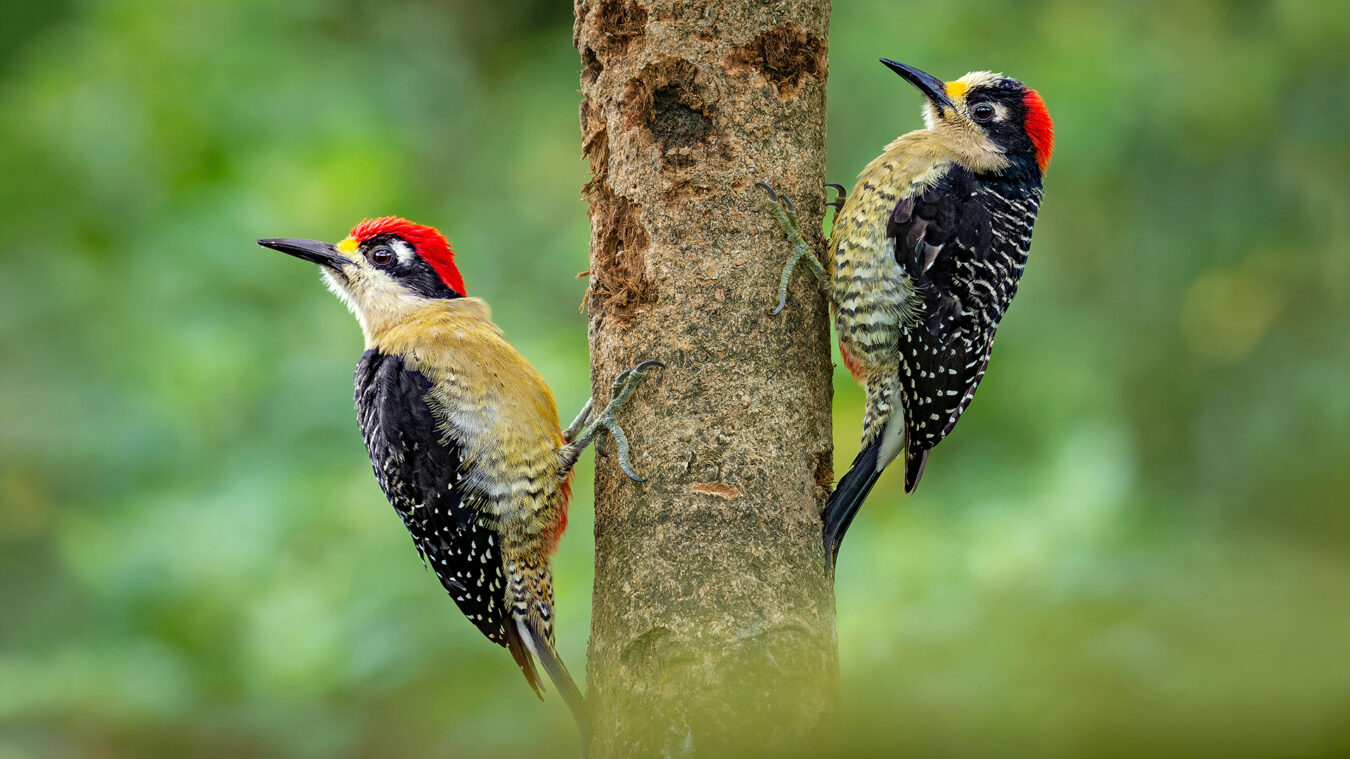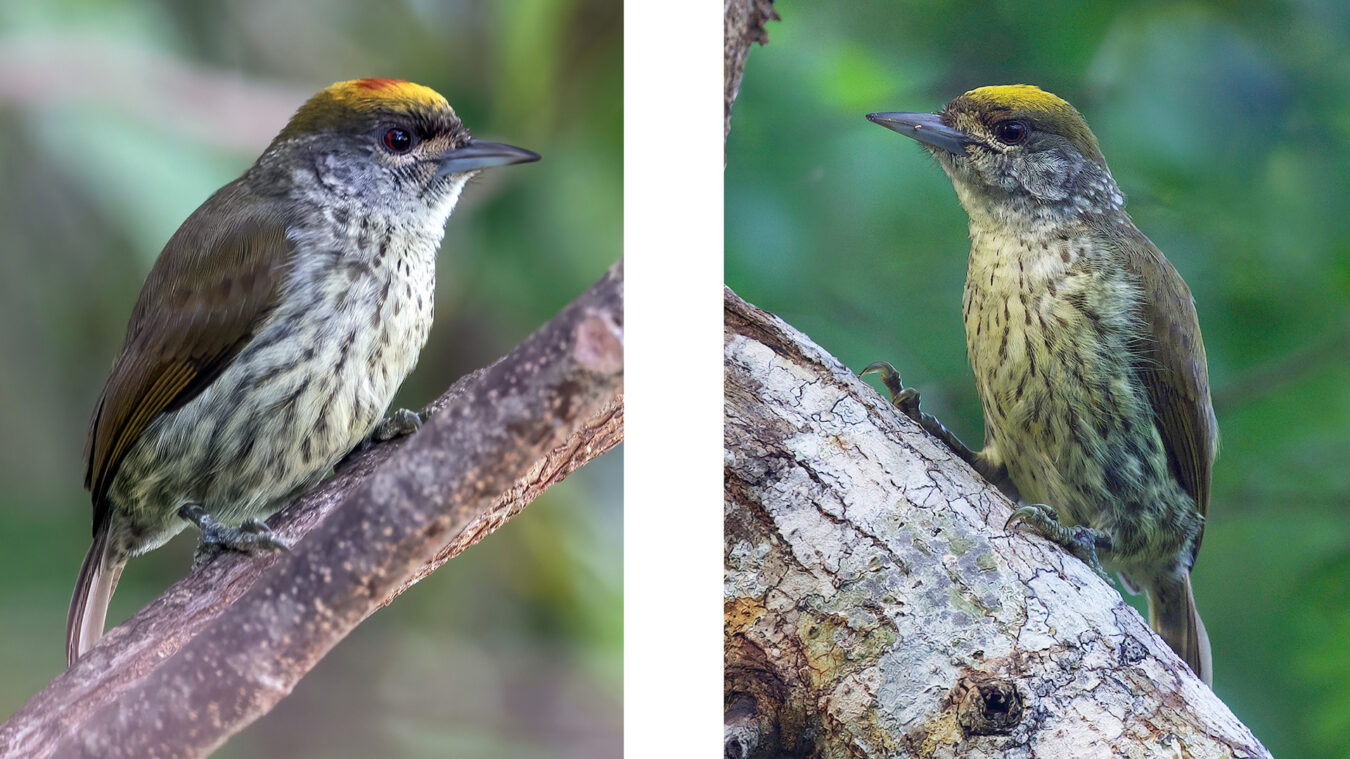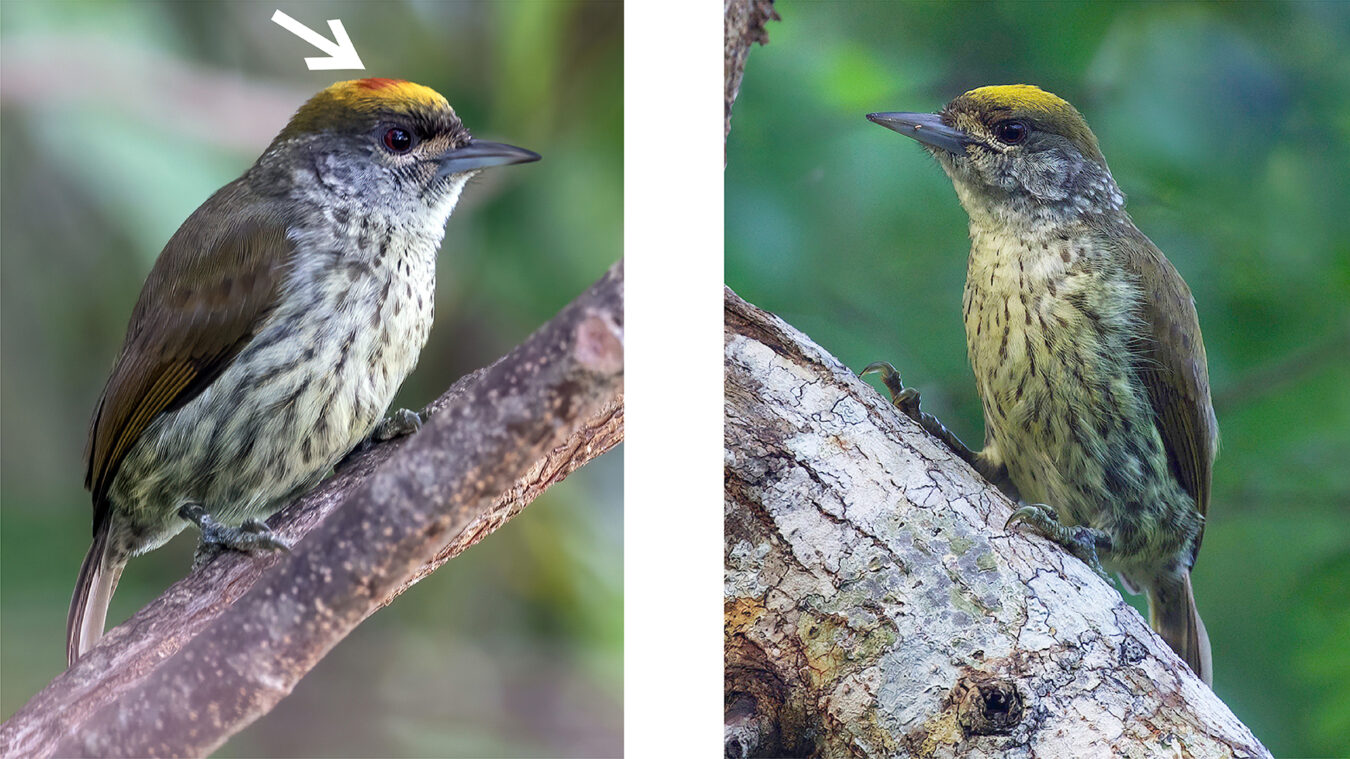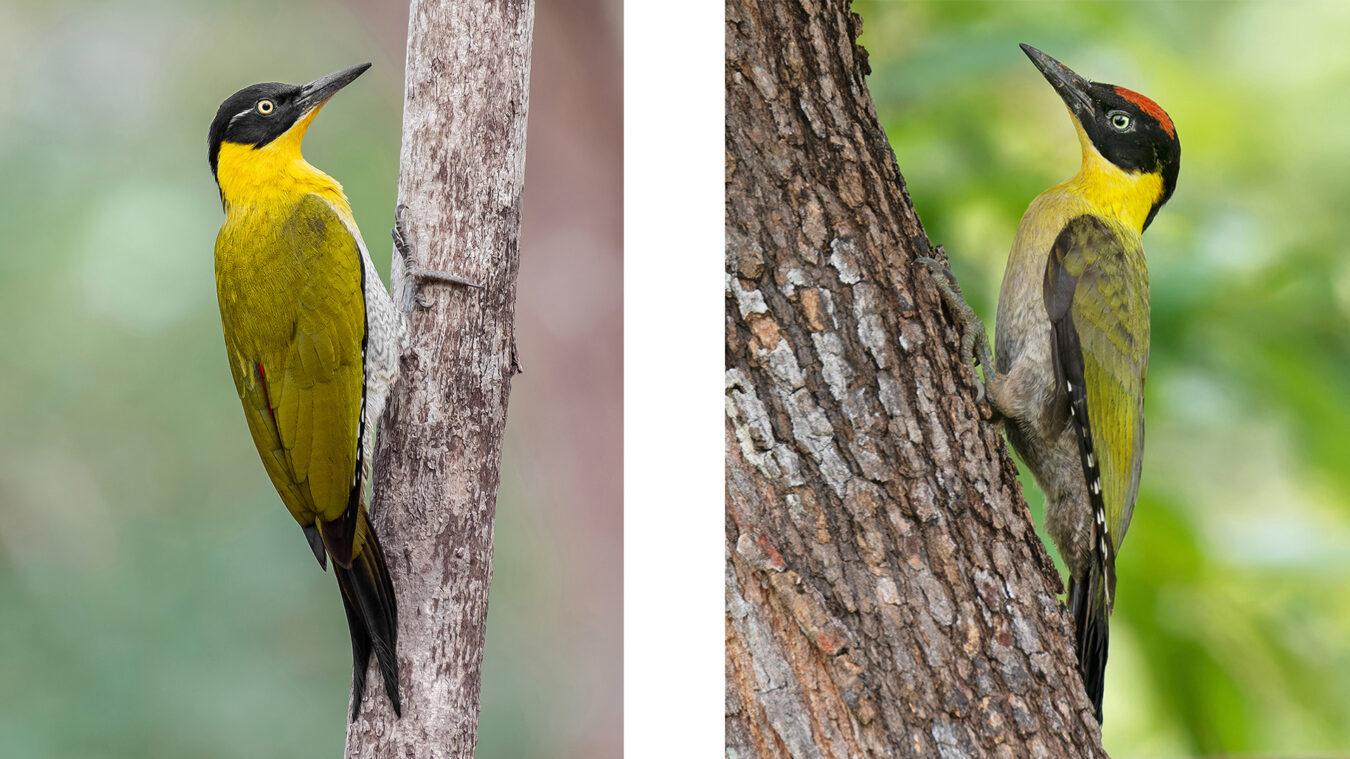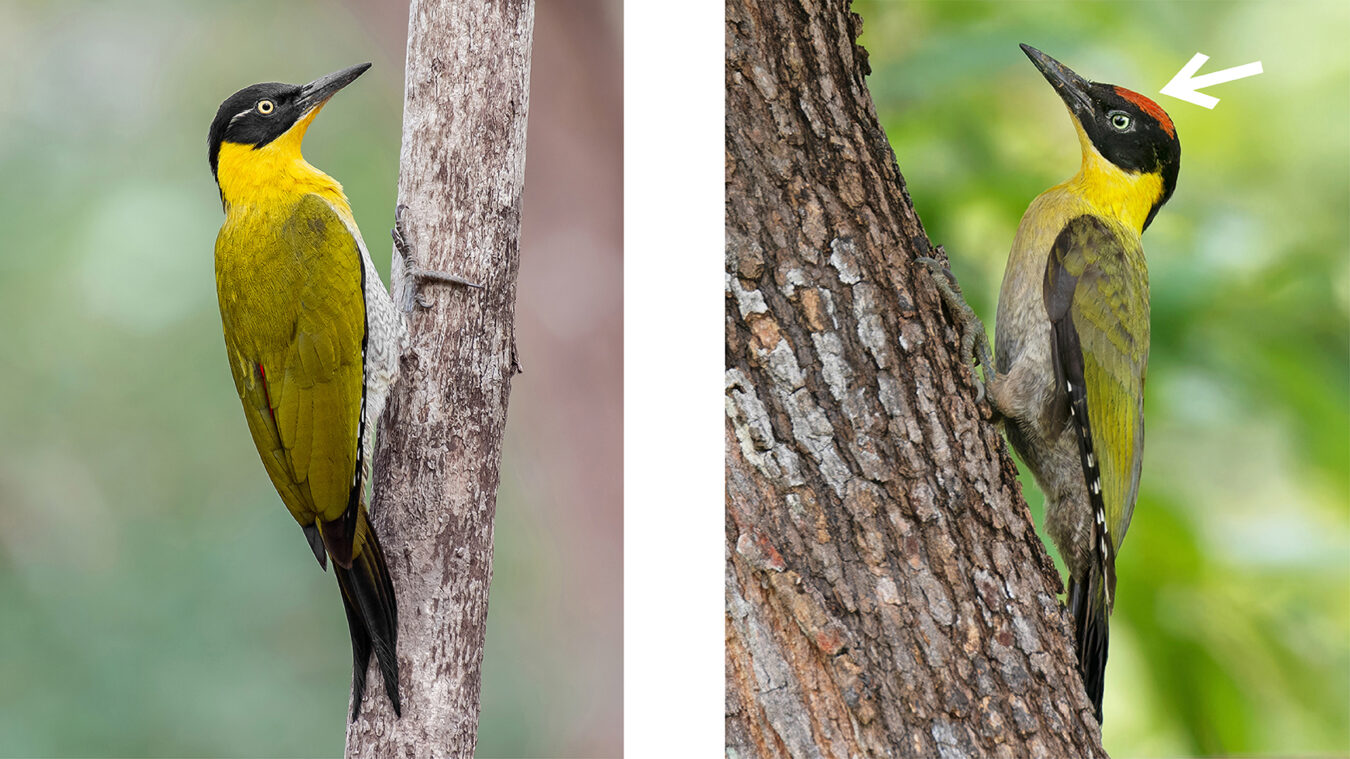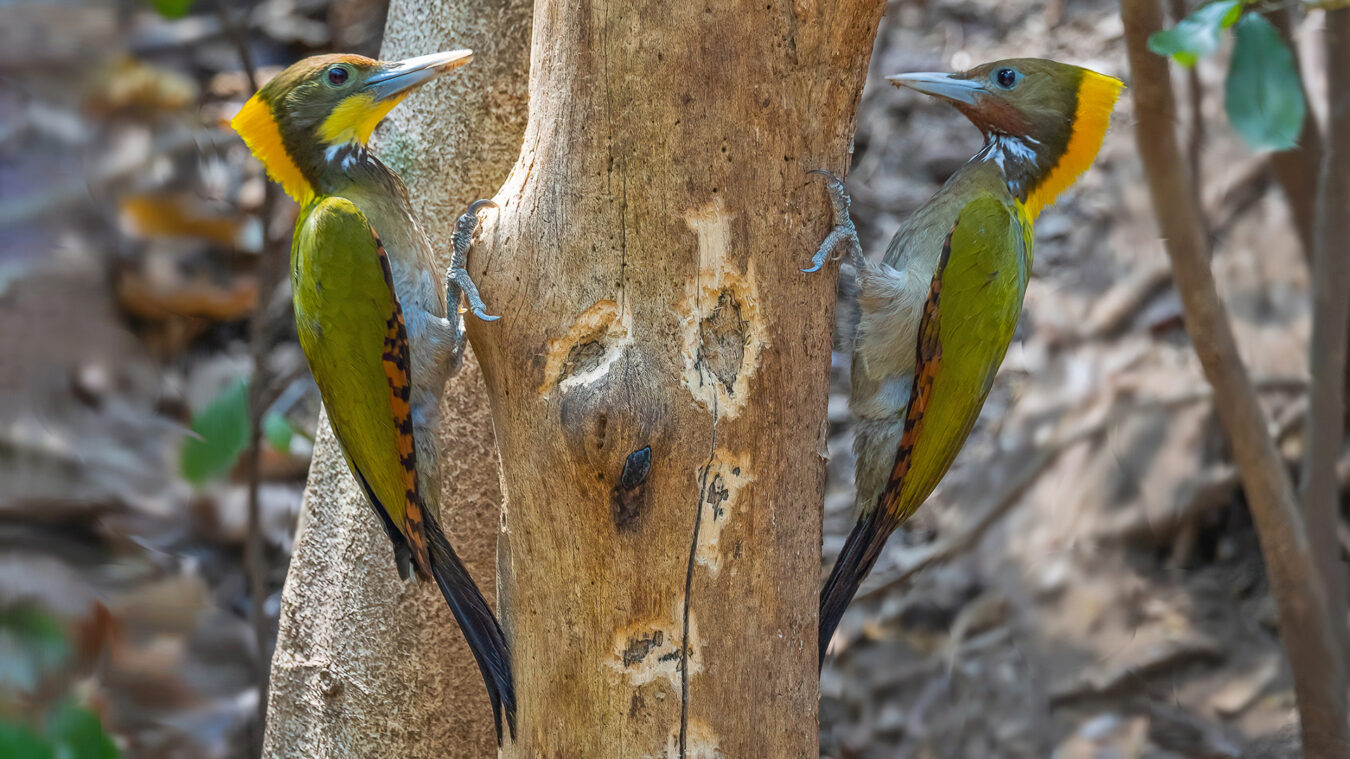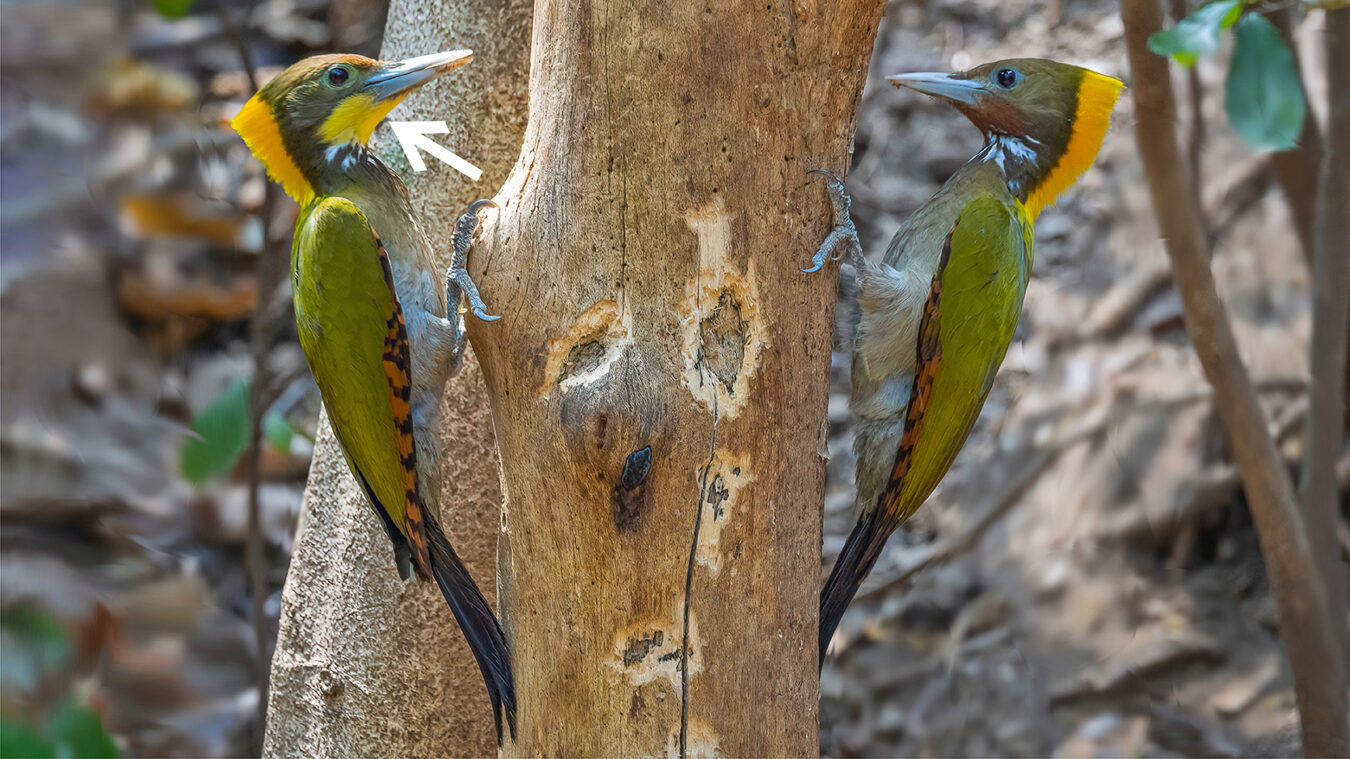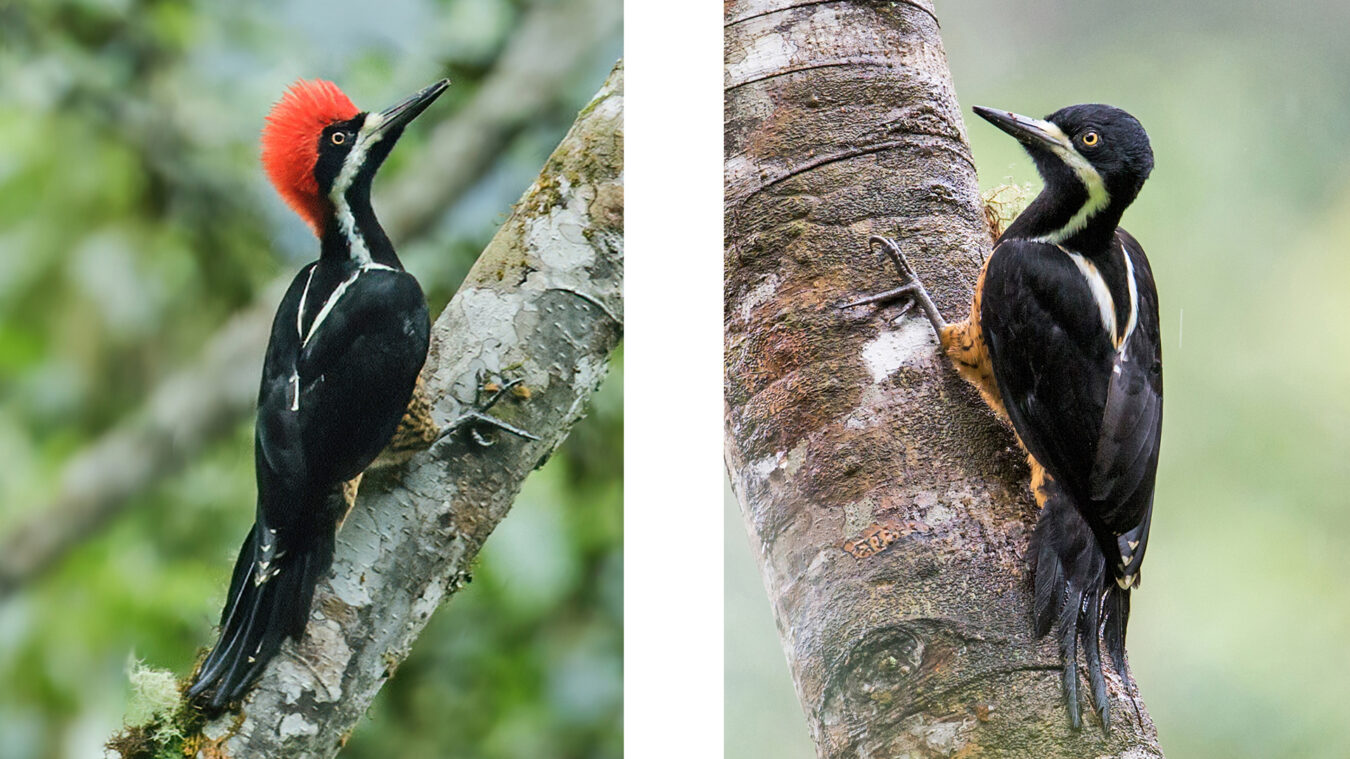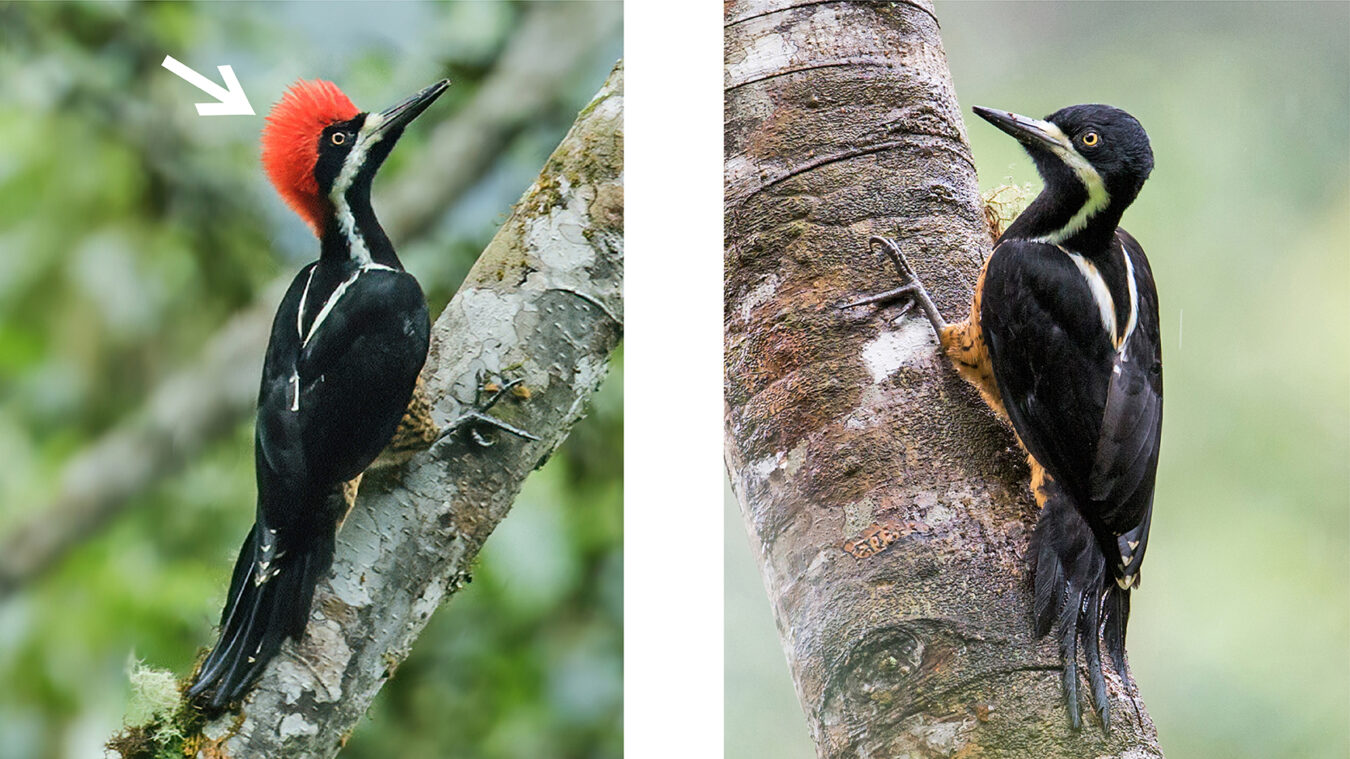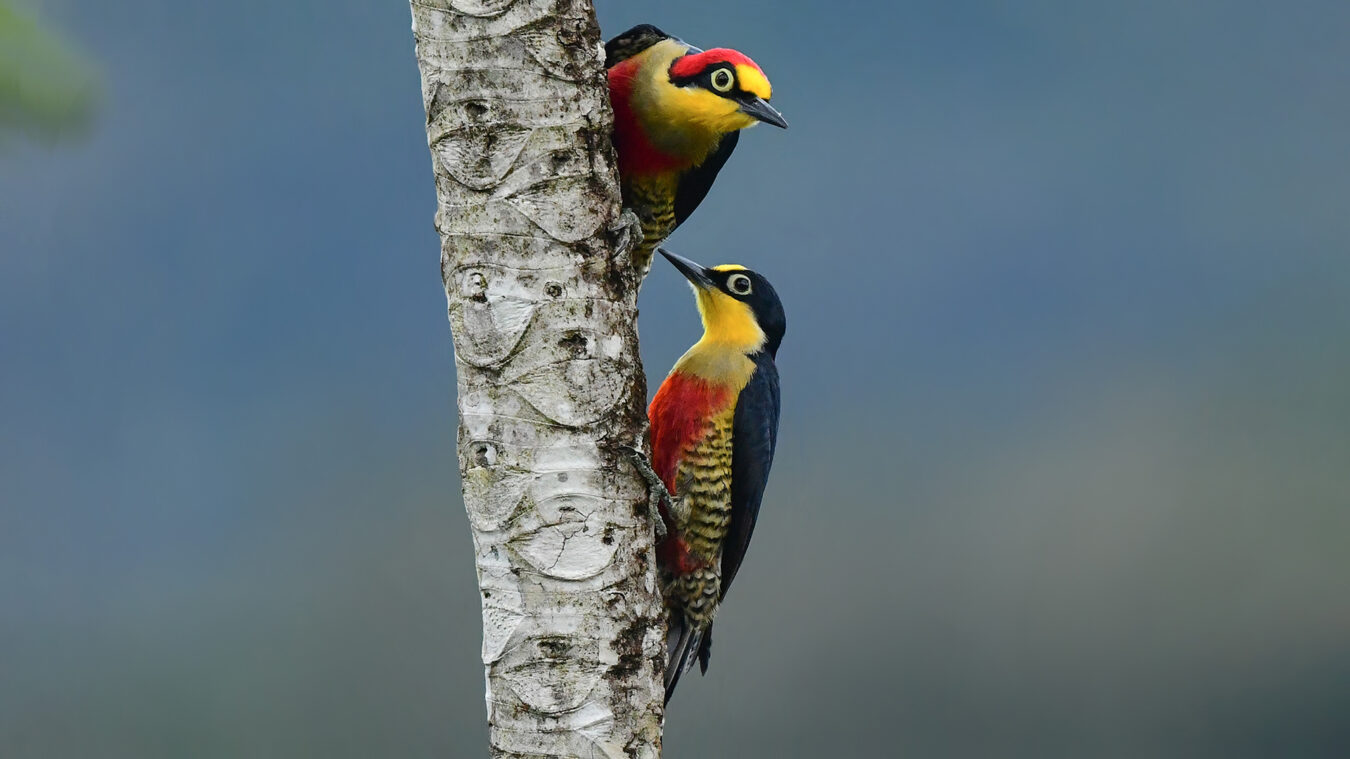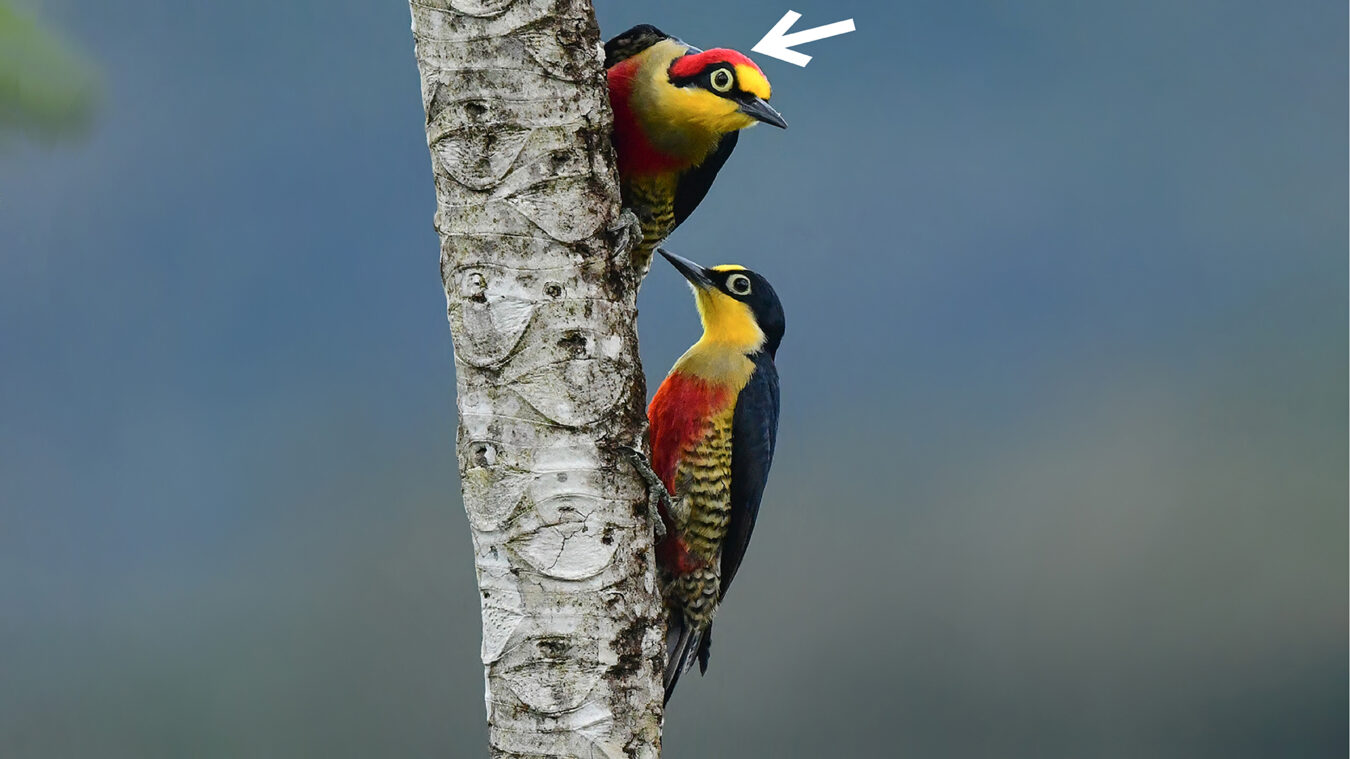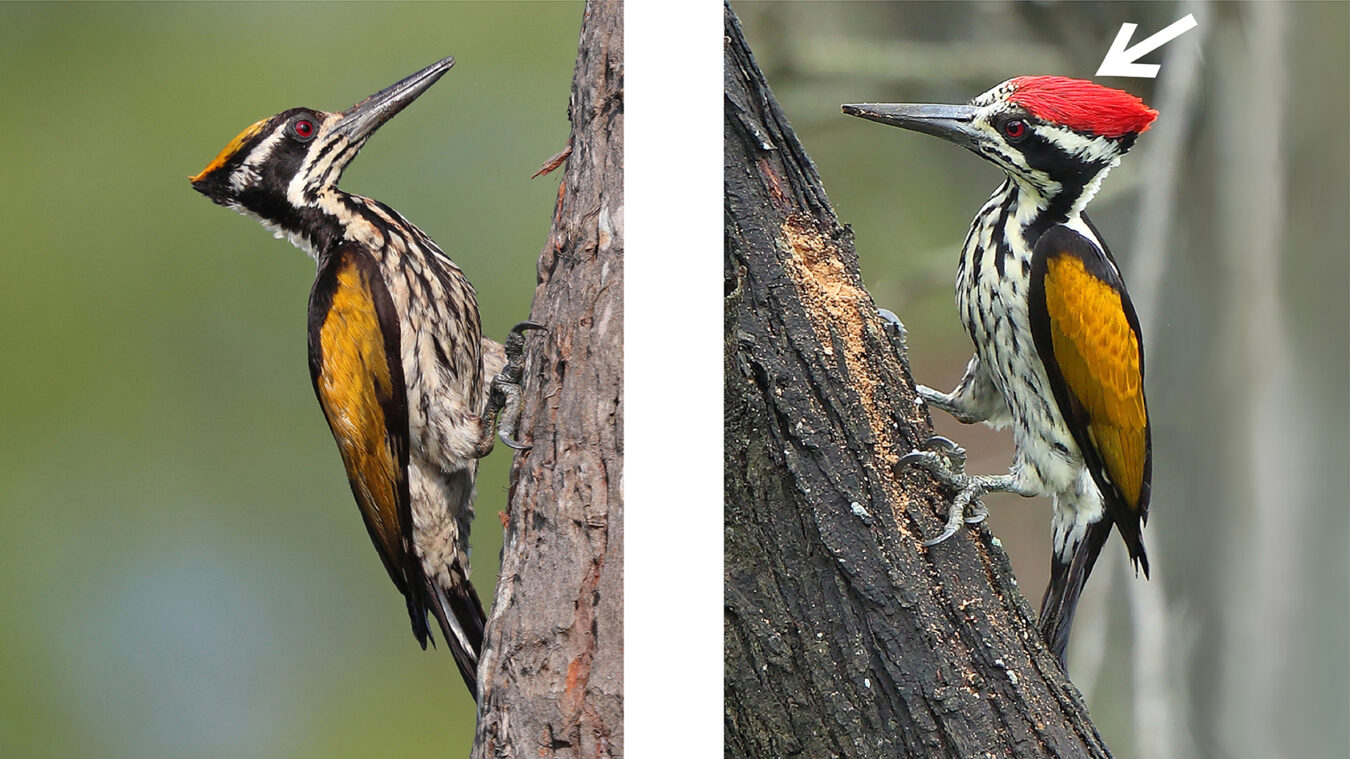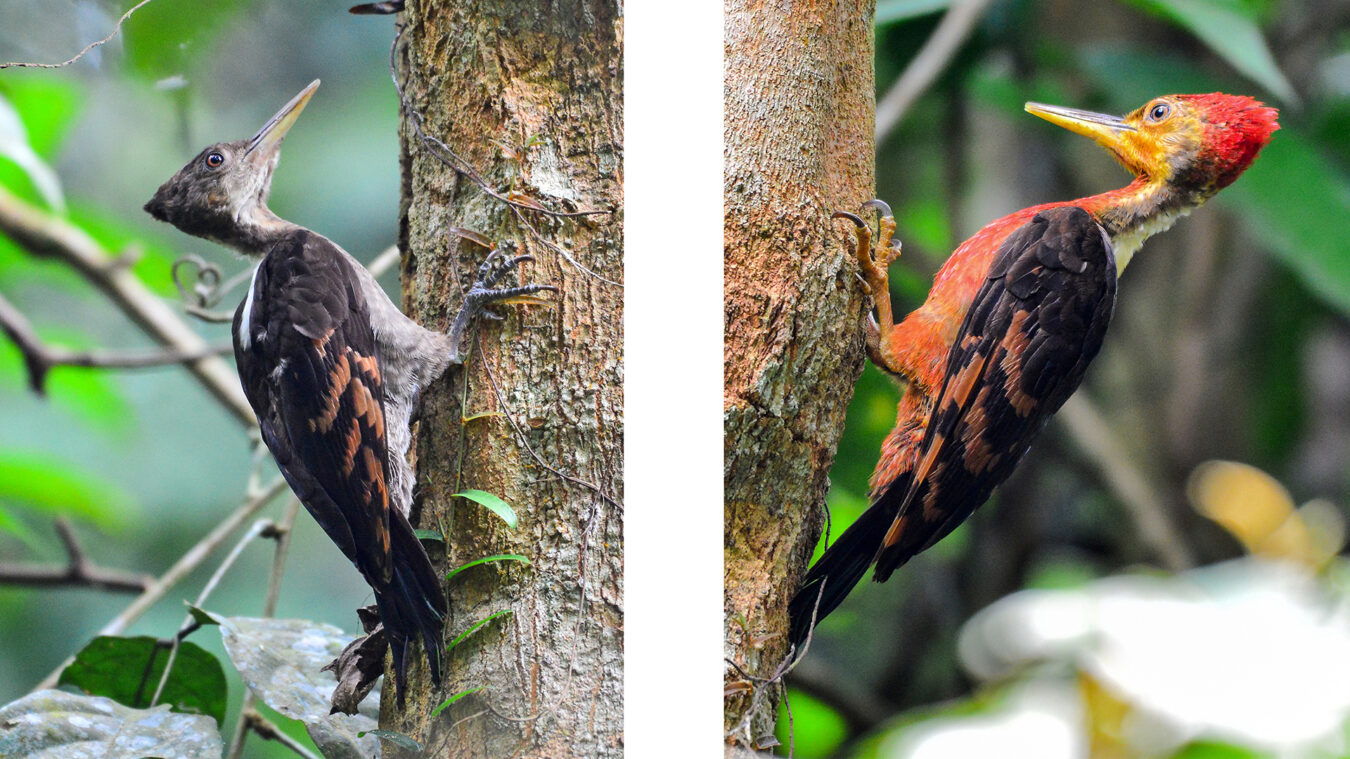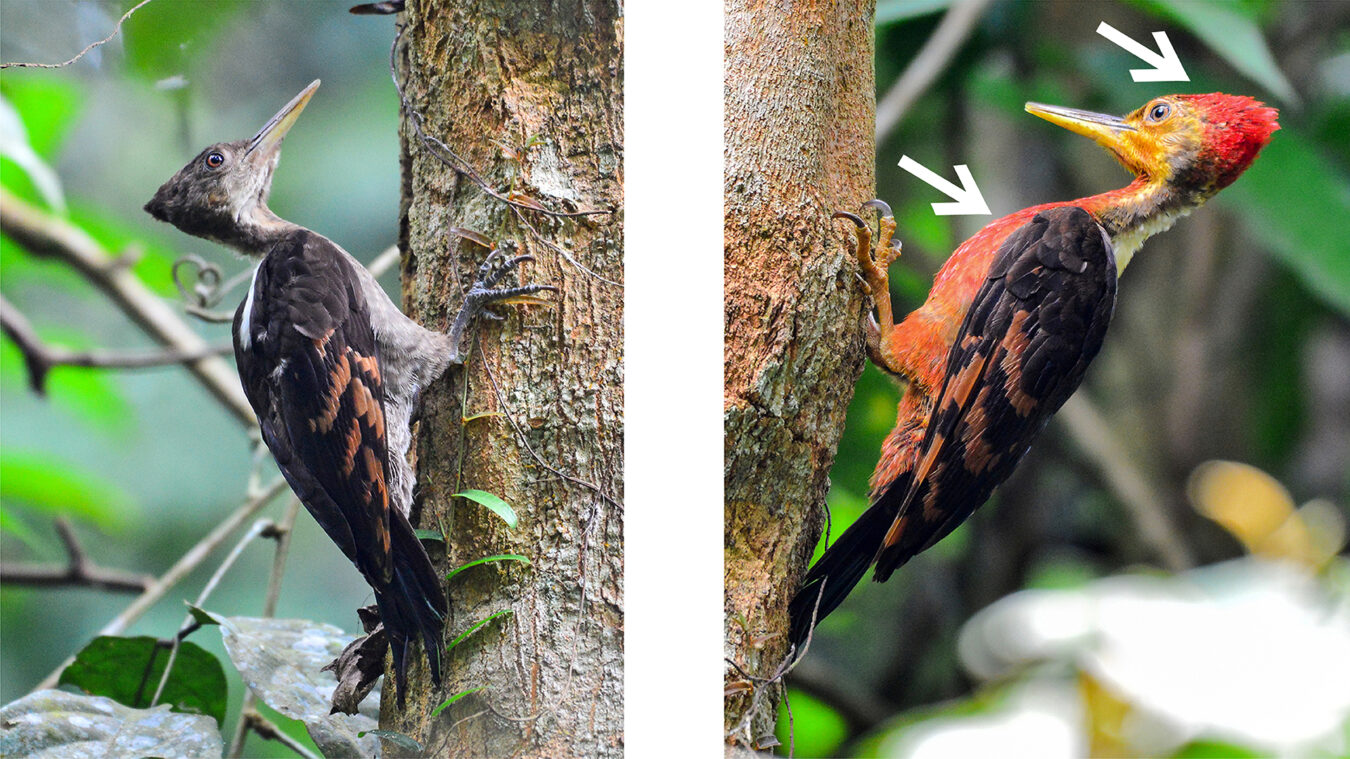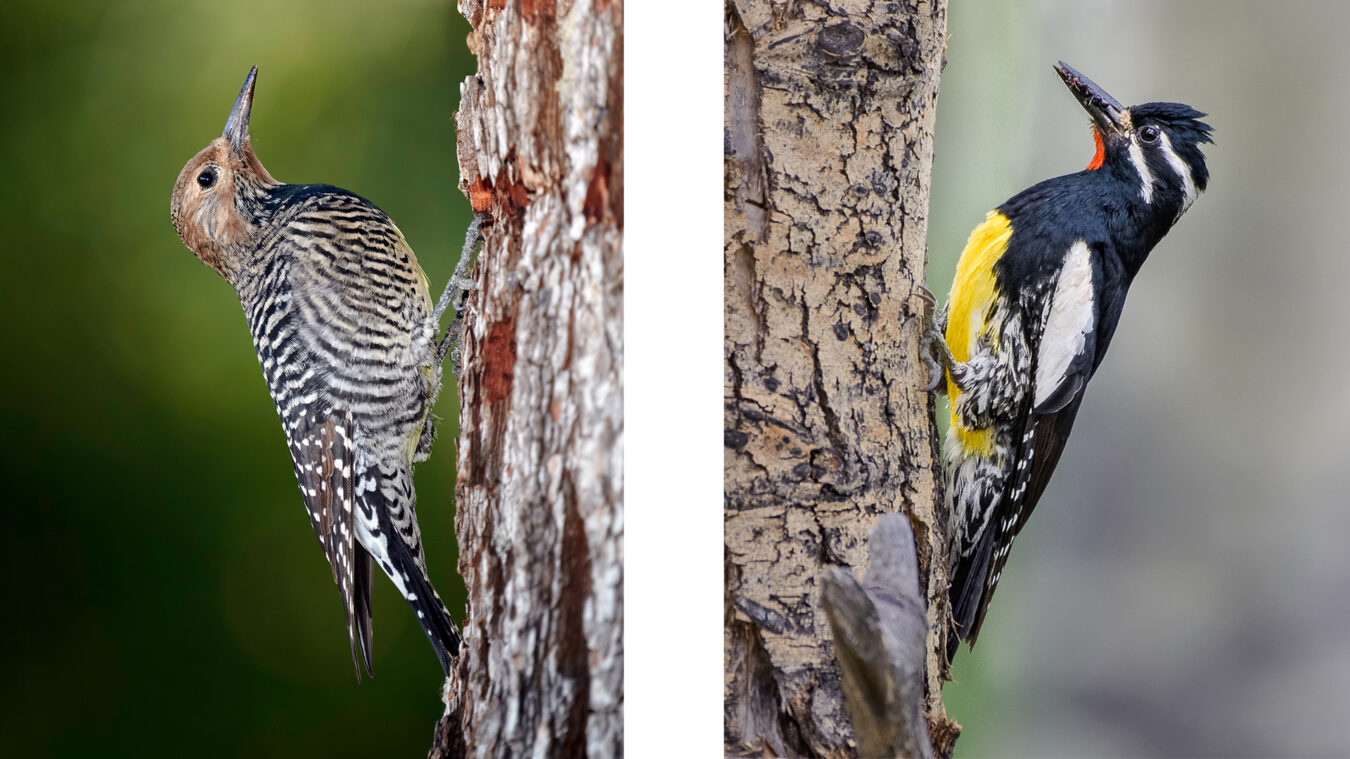Free Preview: The Wonderful World of Woodpeckers
Enjoy this preview of content from the self-paced online course The Wonderful World of Woodpeckers
What Makes a Woodpecker a Woodpecker?
You probably know a woodpecker when you see one, but did you know there are more than 230 species from all over world? Explore the diversity of woodpeckers big and small in this video.
Woodpeckers are found around the world, except for where temperatures are extreme and trees are scarce, like the Sahara Desert, and the polar regions. Interestingly, there aren’t any woodpeckers in Madagascar, Australia, New Zealand, and the Pacific Islands either, even though woodpeckers could live there. These absences are likely due to limitations in their dispersal abilities. Most woodpeckers aren’t great fliers, and don’t fly long distances, which makes getting to islands difficult.
Nearly everywhere else though, is home to all sorts of woodpeckers. In most places, you’ll find just a handful of species, but there are a few places in South America and Southeast Asia that are home to more than a dozen woodpecker species.
So, who are these woodpeckers? The family Picidae includes true woodpeckers and their cousins. The most distant cousins in the family are the wrynecks. These are two species with short, pointed bills, rather long, soft tails, big mouths, and very effective camouflage, colored in browns and grays. They’re odd species that forage mostly on the ground, where they primarily eat ants, catching some with their long tongues. I can see a little bit of resemblance to other woodpeckers in their zygodactyl toes and long tongue, but they’re certainly not like most woodpeckers you think of.
The true woodpecker’s closest relatives are the piculets. There are about 30 of these species, mostly found in South America, but a few can be found in Southeast Asia, and there’s also one species in Africa. These are a lot smaller and more round than your average woodpecker, with stubby, soft tails. Most of them look vaguely woodpecker-like in their coloration, and they also do some of the same things woodpeckers do, like drum on trees and excavate their own holes. And even though they look vaguely woodpecker-like, a few are rather strange-looking!
Now we come to the true woodpeckers. There are more than 200 woodpeckers found around the world. Most of them are called woodpeckers, but there are a few that don’t have ‘woodpecker’ in their name: the sapsuckers, yellownapes, flamebacks, and flickers.
Woodpeckers range in size from as small as a sparrow to as big as a crow.
Beyond size, there are a few different general motifs of woodpeckers around the world. Probably the most obvious difference among woodpeckers is whether or not they have a crest. The crests are often red, but they can be all kinds of yellow, as well as black, brown, striped, or even polka dotted!
Speaking of red, that’s one of the most obvious colors on many woodpeckers. The cap, neck, or breast are some of the most likely places to find red. But other woodpeckers have red on their back, wings, or under their tail.
Not all woodpeckers are black, white, and red all over. There are woodpeckers that are green, yellow, gray, and brown. There are even a couple of white woodpeckers, which to my eye definitely stretches what a woodpecker can look like!
No matter the color, woodpeckers can be patterned, or plain. Some woodpeckers have pattern just on their backs; others, the pattern is just on their breast. Still others are patterned all over, and some are completely plain. The patterns themselves might be spots, streaks, or big bold patches of color. Within a species, you might find variations of these patterns.
Many woodpeckers show sexual dimorphism, where males and females look different from one another. The most common plumage difference between the sexes is the presence of a colored patch on the male, usually red, that’s missing on the female.
We’ve spent a lot of time talking about woodpeckers that look different from one another, but let’s take a minute to talk about woodpeckers that look similar to each other. No matter where you are in the world, you’ve probably seen a pair of woodpeckers that look strangely alike.
In the northeastern U.S. where I live, it’s the Hairy and Downy Woodpeckers. There are some reliable ways to tell them apart, but I think we can all agree they look amazingly similar to one another.
In Europe, it’s the Great and Middle Spotted Woodpeckers.
And the Greater and Common Flamebacks of southeast Asia are also remarkably similar to one another.
Now you may be thinking that these species must be closely related, but remarkably they’re not!
Downy Woodpeckers are more closely related to Nuttall’s and Ladder-backed Woodpeckers.
And Hairy Woodpeckers are more closely related to the White-headed Woodpecker and Arizona Woodpecker even though they look so different.
Great Spotted Woodpeckers are more closely related to Okinawa and Rufous-bellied Woodpeckers, than the Middle Spotted Woodpecker.
And Greater and Common Flamebacks? They’re so unrelated, they’re on completely different sides of the true-woodpecker family tree!
So, what’s going on here? Scientists suspect that these pairs are mimicking one another. Specifically, that the less dominant of the two woodpeckers is mimicking the more dominant. This can be an advantage when it comes to interactions with other species, giving the less dominant species a chance to appear more threatening than it really is.
That said, scientists are still trying to figure out exactly why, and how, these woodpeckers got to be such good matches for one another.
And now you have a basic understanding of the range of woodpeckers and how they can look. Let’s explore some of the more unusual woodpeckers that are out there.
Woodpecker Characteristics
You’re likely to recognize a woodpecker by its strong, pointed bill and ability to cling to the sides of trees. Even if you’ve never seen this Black-headed Woodpecker from Thailand before, you probably could have guessed that it is a woodpecker! Here are the main features that make all true woodpeckers recognizable: strong, chisel-like, pointed bill, zygodactyl toes (two forward, two back), short legs, and stiff tail feathers.
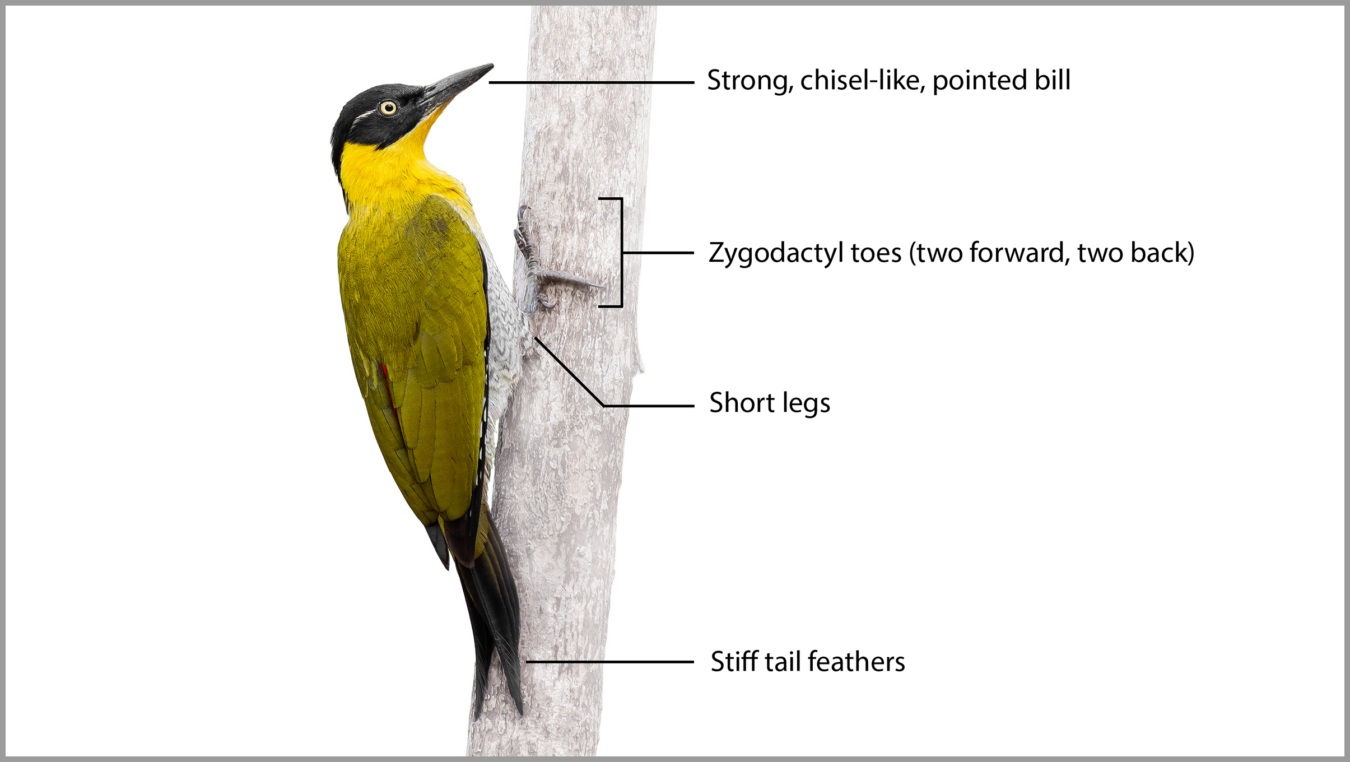
Male or Female? Spot the Difference!
Here is a selection of woodpecker couples from around the world. The most common plumage difference between the sexes is a colored patch on the male, usually red, that’s missing from the female. For each couple, see if you can determine which woodpecker is female, and which is male.
Enroll in The Wonderful World of Woodpeckers Now!
Thanks for previewing sample content from The Wonderful World of Woodpeckers. There are more videos and interactives like these to learn from in this self-paced course—plus text, image galleries, and diagrams—to help you dive in and get to know these spectacular birds.
Video Thumbnail Credits
Downy Woodpecker: Taylor Sturm/Macaulay Library 55542691
Maroon Woodpecker: Ayuwat Jearwattanakanok/Macaulay Library 608423893
Brown-fronted Woodpecker: Rajkumar Das/Macaulay Library 404027621
Pale-billed Woodpecker: Roger MacKertich/Macaulay Library 609276370
Male and Female Woodpeckers Credits
Black-cheeked Woodpeckers: Alexander Montero/Macaulay Library 488840201
Antillean Piculets: Lev Frid/Macaulay Library 396348461 and David Ascanio/Macaulay Library 387122401
Black-headed Woodpeckers: Natthaphat Chotjuckdikul/Macaulay Library 591273861 and Ayuwat Jearwattanakanok/Macaulay Library 595982651
Cardinal Woodpeckers: Adam Riley/Macaulay Library 204675251 and Nigel Voaden/Macaulay Library 47424181
Greater Yellownapes: Nattapong Banhomglin/Macaulay Library 551375231
Powerful Woodpeckers: Nick Athanas/Macaulay Library 219069111 and Nick Athanas/Macaulay Library 121431851
Yellow-fronted Woodpeckers: Xueping & Stephan Popp/Macaulay Library 529792281
White-naped Woodpeckers: Gehan Rajeev/Macaulay Library 524298751 and Albin Jacob/Macaulay Library 364533621
Orange-backed Woodpeckers: Harn Sheng Khor/Macaulay Library 175552521 and Harn Sheng Khor /Macaulay Library 175552451
Williamson’s Sapsuckers: Sharif Uddin/Macaulay Library 382532671 and Brian Genge/Macaulay Library 247159221
Heart-spotted Woodpeckers: Ayuwat Jearwattanakanok/Macaulay Library 142691881 and Jan-Peter Kelder/Macaulay Library 481072061
Red-headed Woodpeckers: Ryan Sanderson/Macaulay Library 203317061 and Kalin Ocaña/Macaulay Library 455073781


